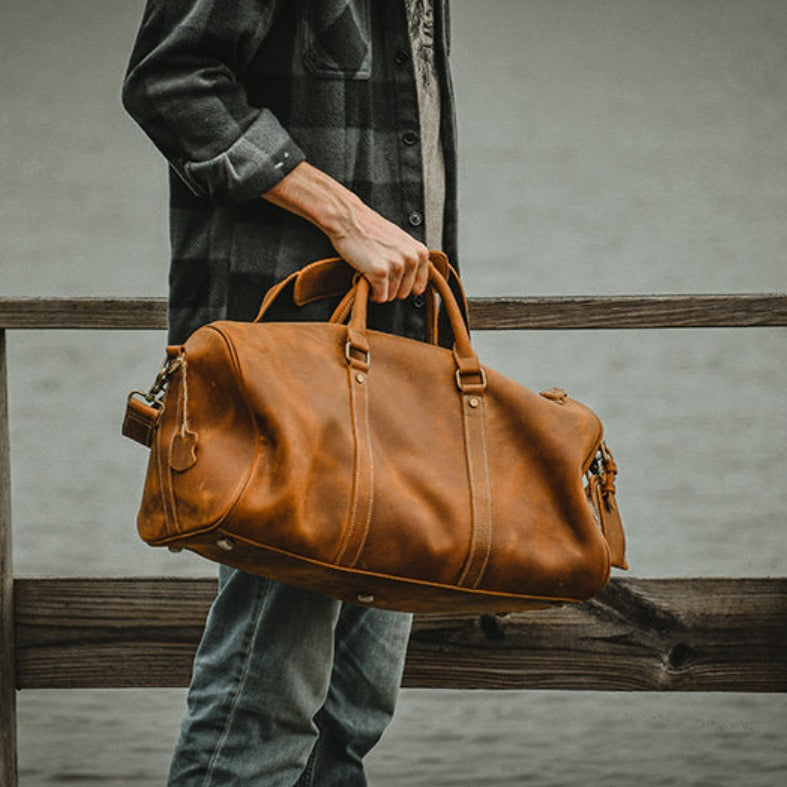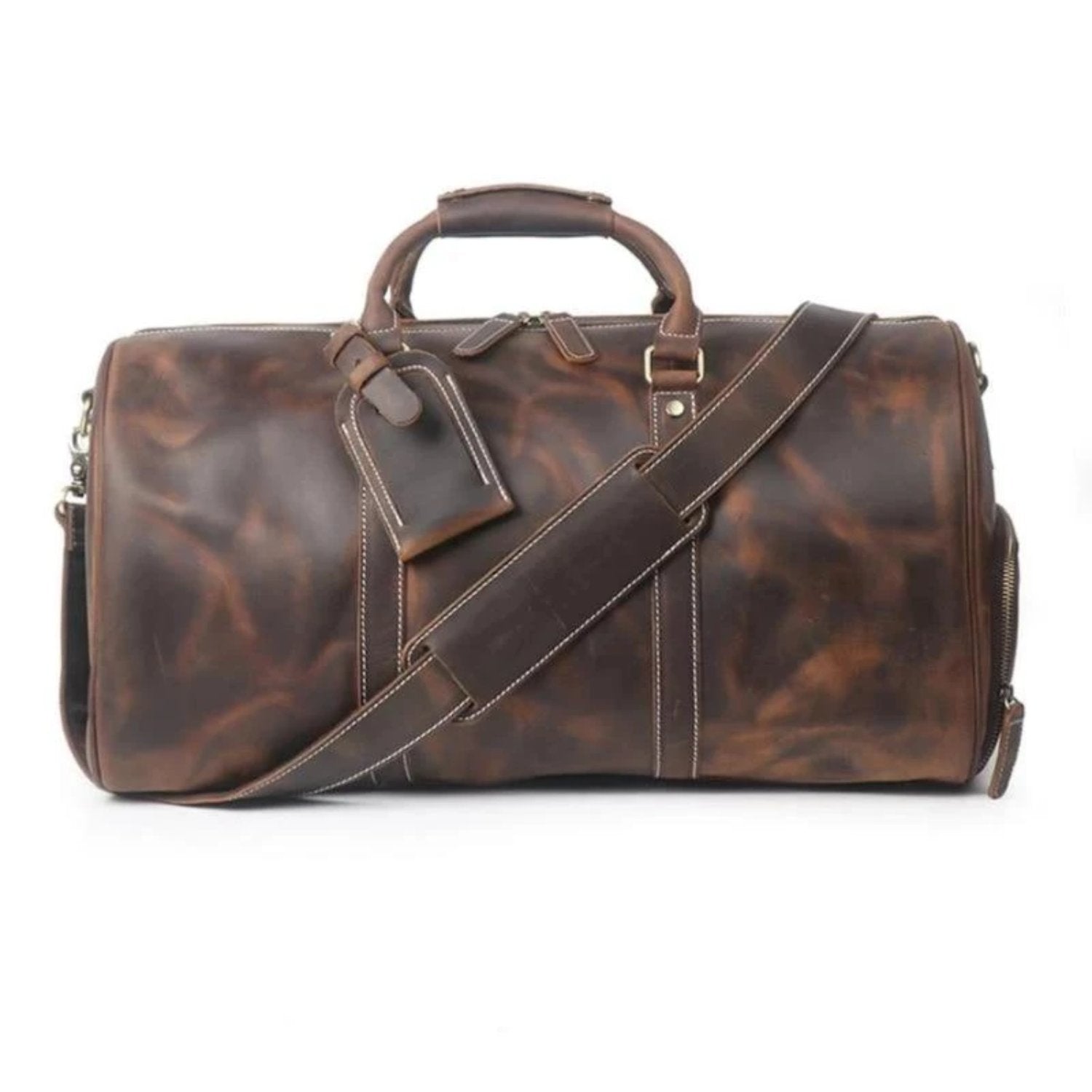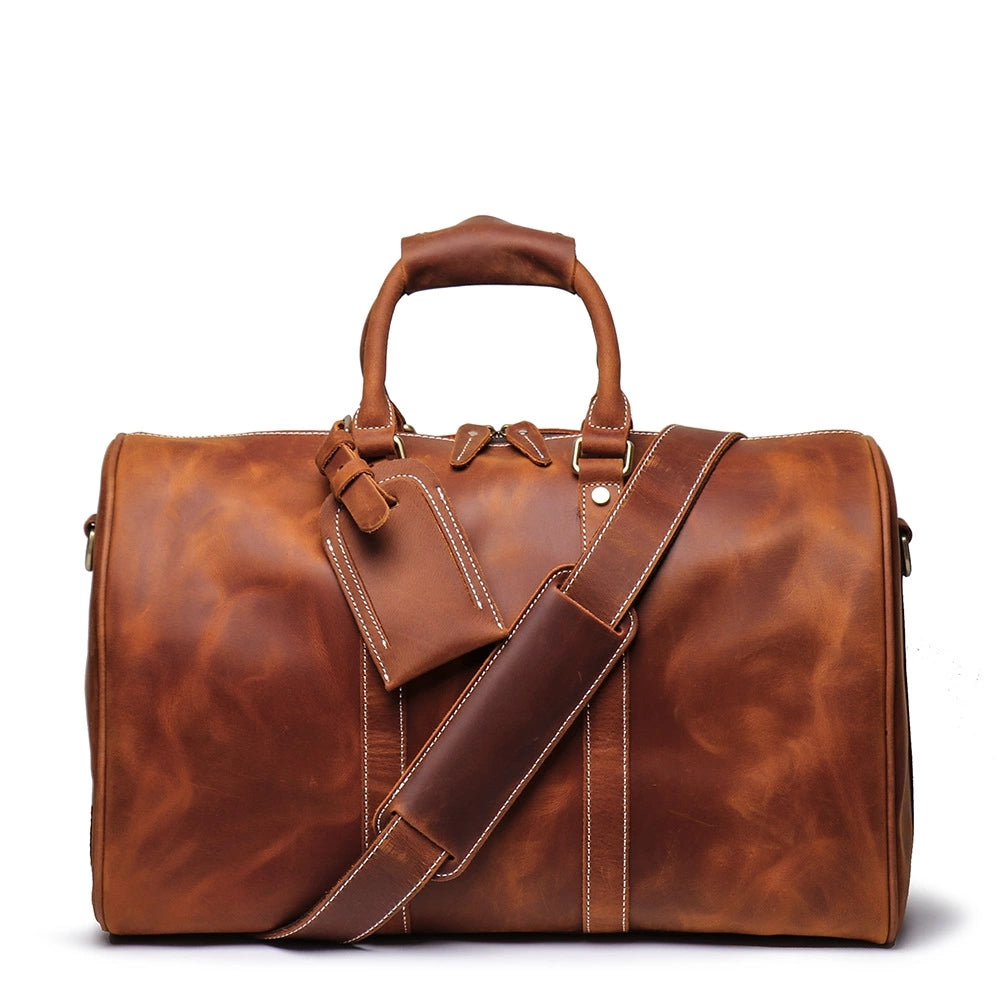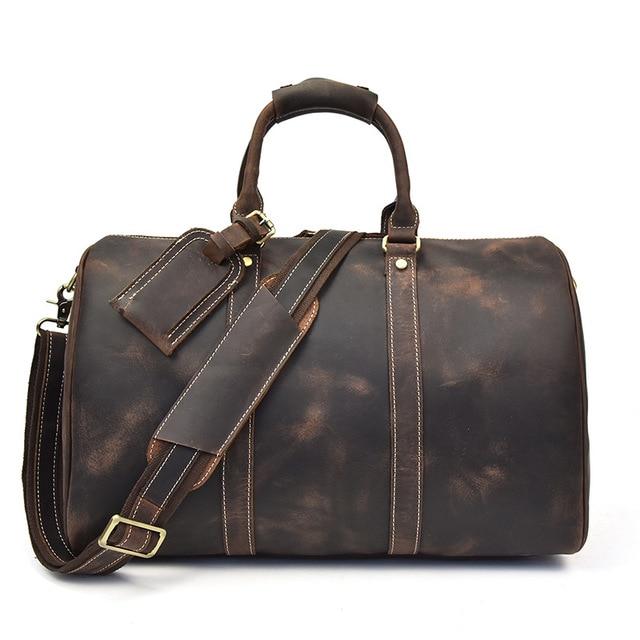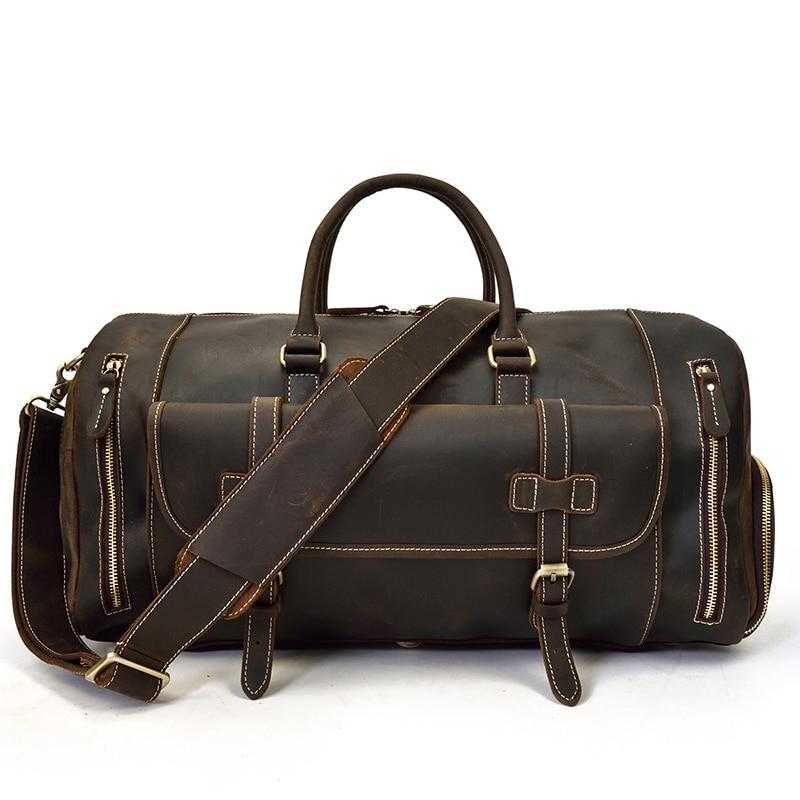
The Texture of Leather Process
The texture of leather needs to become more defined and distinct, as it is a very important part of the design. The texture of leather is the most important factor in determining its suitability for a particular application. It can be leather grain, softness, or hardness.
Leather is a product that used for centuries for clothing and other products. It’s from the animals.
One of the processes called is leather tanning. Which is a complicated and time-consuming process. Though mechanization has reduced the manual labor involved, it still requires a lot of effort and time. The purpose of the sunbathing process is to change the protein structure of the human body to improve its durability, texture, appearance, and health.
There are many different types of leather. All types of leather have to pass through four basic stages before they become usable. These include prepping, tanning, retanning, and finishing the skin. Before sending to the leather factory, the animal skin must be cured.
Usually, the animal has its skin removed before the body heat leaves its tissues. Keep the skin out of direct sunlight until it is completely dry, even if it means waiting for several hours.
Tutorial Steps for Making the Texture of Leather
There are various preparatory processes for removing unwanted raw skin components. However, they all serve the same purpose. Depending on the quality and type you want, the tannery might not be able to perform all of them.
1. Soaking
During the curing process, salt helps to restore the moisture lost during salted meat processing, and it also removes dirt, debris, blood, and fat from the meat.
2. Fleshing
This process removes subdermal fat from the skin side. Usually, this process happens after slaughter, soaking, and/or salt. After tanning, hides may become separated into different layers.
3. Hair removal
Hair is removed by using mechanical instruments such as roller brushes and blades. It is important to remove hair because it will affect the final results. If the hair is left intact, it will make the finished product look dirty.
4. Pickling
This process involves cleaning rawhide and then soaking it in acids or salts to avoid decomposition. It helps the penetration into the skin of tanning agents such as chromium and aldehyde.
5. De-pickling
After pickling, the hide is soaked in sulfur dioxide to lower the pH. This allows the hide to absorb more chemicals and creates a strong bond between the hide and the chemical solution.
6. Liming
This process loosens skin fibers so they can absorb various tanning chemicals better. Sodium sulfide and hydrated lye are usually used to treat the hide because they remove keratinous materials such as hair and wool from the skin. As the pH increases, fats get hydrolyzed into fatty acids. When water is absorbed into the skin, it swells up the skin fibers, which results in a swollen skin structure
7. De-Liming
After the hide has been soaked for several days, the hide is washed by soaking it in a solution of water and ammonium salt. This removes water (as well as any impurities) to help reduce swelling.
8. Bating
Liming marks the end of the bating process. Proteolytic bating enzymes are used to treat flaccid skin by removing non-fibrous protein. It removes impurities from the leather grain and makes the fur soft and shiny.
9. De-Greasing
When using water-based solutions or solvents to remove excess grease or naturally occurring fatty acids from the skin, they are often used to soften the skin.
10. Bleaching
Chemical agents are used in tanning to make the hide colorless so that it can be colored later.
How to Identify Different Textures of Leather and Leather Quality
Buying a genuine leather product requires thoughtful consideration and a sharp eye for recognizing the quality and craftsmanship of leather. For most average shoppers who don't care about quality, leather is just leather However, many of you already know that isn't true, right? Leather manufacturers often use different types of materials, depending on the end products they're making.
Before you spend a lot of money on buying your favorite genuine leather items, you should know two things:
“Where can you buy leather?”
“What are the best leathers?”
You should definitely read through this leather guide before making your final decision. It has everything that you need to know to make the best choice.
Before we dig deeper into the different textures, types, qualities, and characteristics of leather, let‘s first take a look at the history of the leather industry and how it has evolved over time.

The Texture of Leather and its Industry
Tanning leather has been around for hundreds of years. It’s an industry that has been around for thousands of years. Before the advent of modern technology, people from India, Egypt, Greece, China, and Mesopotamia had developed various methods for producing tanned leather. Leather was used to create intricate clothing items such as footwear, gloves, and armor. It was also used for making buckets, bottles, and weapons. The Industrial Revolution brought many new technological advances that improved the leather-making process. These included making the process more efficient, environmentally friendly, and hygienically clean.
The leather industry in America dates back to colonial times It grew with the increasing population during the 18th century. By 1750, the number of tanneries in the United States had reached more than 1,000. By 1840, the number had grown to more than 8,000. Back then, the primary leather activity in the United States was shoe manufacturing. By 1850, there were over 11,000 shoe manufacturing establishments operating in the United States.
Types of Leather Goods
Leather varies greatly in terms of quality. You've probably seen different labels on leather products, such as top grain, genuine, etc. These are just different kinds of leathers based on the quality of their material.
They are nothing but various kinds of leathers depending on their quality.
Buying leather is not enough; you need to know which type of leather you want. You'll need to understand why some things last longer than others, and why some items cost so much, while others cost less.
Leather depends on these important factors, including:
- Breed of animal and type of animal
- Where the animal lived
- The portion of the skin the leather came from
- The type of leather used (full-grain, top-grain, split)
- Quality and skill of processing and tanning
Depending on the breed of cow, the quality of its hide will vary. Cold climates tend not to have as many insects as hot climates. Some breeds might be better suited for colder climates than others.
Different parts of the hide yield different qualities of leather. For example, the lower portion of the hide tends to be made up of loose fibers. Loose fibers absorb water better than tight ones. The lower parts of the hide also tend to get marked by insects and scrapes like barbwire fences. There are also more folds in the skin around the legs, neck, and head. These scars and wrinkles are permanent and cannot be removed during the tanning process.
Depending on the layer, different qualities of leather may be used. Full-grain leather is the best. Top-grain leather is not as good.
Knowing how to properly take a rawhide and finish it into leather is an important skill that will affect the quality of the finished product.
Horizontal fibers wear out faster than vertical ones because they can easily tear apart. Running fibers vertically is the strongest. The higher the number of vertical fibers, the better.
There are generally five kinds of leather: Full Grain, Top Grain, Corrected Grain, Bonded, and Aniline Leather.
1. Full Grain Leather
Full-grain leather is made from the top layer of cowhide. It includes all the grains with it, hence the name full-grained leather. This type of leather has the inherent toughness, as it doesn't alter the surface or split.
It is the highest-quality leather and the only one suited for saddlebacks. Working with this leather is challenging. It absorbs body oils and develops a patina, which gives it its popularity.
Common uses: Saddleback Leather Products, sought-after leather goods.
2. Top Grain Leather
Top leather grain is the highest quality leather. To get top grain leather, the outermost layer of skin is usually removed from blemished hides. Sanding removes any roughness from the surface. Pigmentation or stinging gives the leather an attractive appearance.
Full-grain leather is usually thicker and stiffer than top-grain leather. However, this type of leather is quite strong and durable, but it tends to stretch permanently. It’s used to produce suede leather and nubuck leather. Most high-end items, such as vintage-style backpacks or black leather jackets, are made from top-grain leather.
Common uses: Leather-making, making high-end products such as handbags, jackets, shoes, etc.
3. Corrected Grain Leather
Corrected grain or genuine leather is made from the remaining skin layers after the top has been removed and formed into the corium. Split leather tends to have a rougher texture than full grain leather because it resides underneath the top layer and is usually used for applications that don't require the leather to be as soft as full grain leather.
Like the top grain leather, the bottom grain leather is also sanded to smooth out any rough edges. Usually, the surface is spray painted and embossed with a leather-like pattern to resemble a natural appearance. However, the processing changes the inherent breathability of the leather.
Common uses: making jackets, handbags, backpacks, messenger bags, accessories (such as belts), footwear, and furniture.
4. Bonded Leather
Bonded leather is usually made from leftover parts of the hide. This includes the dust, shavings, and sawdust. They're bonded together using polyurethane or latex on top of fiber sheets. It is often sprayed with a clear coat to look like full or real leather. It’s impossible to determine the percentage of natural materials used in a product unless the manufacturer discloses it. Bonded leather is the lowest quality leather. It’ll be the cheapest kind of leather.
Common Uses: Making furniture, bookbinding, and various fashion accessories.
5. Aniline Leather
It is the most naturally-sourced leather with minimal resistance to staining. Aniline dioxides are transparent and water-soluble pigments that bring out the natural marks, scars, and wrinkles of the skin.
It is one of the most costly leathers in the world because it is suitable for only high-quality animal skins. It also requires regular maintenance.
Common Uses: Making luxury accessories such as wallets, messenger bags, jackets, and sought-after furniture.
How to Identify Genuine Leather
Buying leather can sometimes be a difficult task. There are different kinds and types of faux leather. Synthetic leather manufacturers are finding new ways to disguise their products as real leather. Luckily, there are a few easy ways to tell if you're buying real leather.
1. Check the Label First
Before trying any of the following hacks, check the label. Most high-end manufacturers will proudly tell you which type of leather they've used to make their products.
Most leather products have tags indicating different types, such as “genuine leather” or “full-grain leather.” If you see dubious tags such as “fake leather” or ‘made with animals,’ chances are, it”s not real leather. When shopping for leather furniture or accessories, avoid buying them without any tags. If the manufacturer tries to hide the authenticity of the leather, it’s a sure sign they don’t want you to know it’s fake.
2. Touch the Texture of Leather
Feel the leather to get an idea of its texture. Because genuine leather is made from animal hides, it will have a varied or uneven texture. If the surface grain looks too smooth, chances are, the material is fake leather.
3. Look for Imperfections
Genuine leather has an inconsistent surface pattern with minor imperfections. Scratches, creases, and wrinkles are an indication of genuine material.
4. Warmth
Remember, genuine leather has been made by taking hides from animals that were once alive. That’s one reason why genuine leather feels so good when you touch it. Faux leather, on the other hand, feels cold and lifeless because it doesn't
5. Elasticity of Leather
Like any animal skin, genuine cowhide changes color when stretched and is more elastic than synthetic leather. If you press your fingertip firmly against natural leather texture, you'll see wrinkles form. But, it will return to its original state soon. Faux leather will hold its shape for a while, but real leather will last longer.
6. Smell of the Leather
Real leather smells distinctly leathery. It retains the smell after undergoing the tanning process. On the other hand, the synthetic leather material smells like plastic.
7. Rough Edges
Regardless of whether you're looking for leather recliners or bags, they will always have rougher edges than smooth ones. Because genuine leather is made up of several layers, the frayed edges usually come undone. Faux leather products have smooth edges.
8. Moisture Texture of Leather
Unlike its synthetic counterparts which absorb moisture, natural leather texture readily absorbs water. Splash a drop of liquid onto your leather goods. If it soaks water in seconds, the chances of it being a real leather item are high.
9. Fire Test
You need to be careful when executing this test, as it will damage some part of your leather accessory You can do this on a hard-to-see area, such as the undersides of your leather recliners if you want to be sure. Light the matchstick on fire and burn the designated area. Genuine leather will burn slightly and give off a distinctive smell of burnt hair, whereas faux leather smells of burning plastics.
10. Check the Cost
Regardless of how hard you bargain for genuine leather, it will always cost more than faux leather. There are no cheap deals when it comes to buying leather.
11. Understand Different Texture of Leather
The more you know, the better. So, try to get as much knowledge as you can about the various types. If you're not sure about something, refer to this guide for help.
All You Need To Know About Vinyl Leather
Faux leather is the most common type of synthetic leather. Vinyl has been used for a wide variety of purposes. You've probably heard of vinyl records, vinyl flooring, and even vinyl upholstery.
Vinyl is used as a substitute for leather in many everyday uses. You can make it look just like leather. Genuine leather is certainly harder than vinyl leather. Natural leather will last longer than synthetic leather. This fabric is resistant to tears and punctures. Fake leather is durable and will last for a long time. It won't be as durable as real leather though. It will last longer than most other fabrics.
Differences Between Vinyl Leather to Real Leather
Leather is a natural product, and it has its own unique texture. The leather will be soft to the touch, but it can also have a rough feel. It may even appear shiny or dull in certain
The texture of leather is one of the most important aspects to consider when choosing a piece of leather for your project. The texture will determine how it will look and feel in your finished product, as well as what type of surface you can use
The leather is soft and supple, with a slight sheen to it. It has a nice grain that runs through the product, the great quality color is dark brown.
Leather has many benefits; however, it is expensive! Vinyl offers you the look of leather at a lower price. They require minimal maintenance and look good. Faux leather has many other advantages compared to real leather, so it is worth considering.
Vinyl has many applications, whereas real leather might not be feasible because of price or exposure. Think boat seats, restaurants, RV furniture, and even more. Vinyl offers a similar look that is more affordable and weather resistant than real leather.

How Leather Colours Made
Depending on the type of tanning agent used, the initial color of the leather may vary. Tannins of the plant give it the brown leather texture, fat, and oil-tanned leather is yellowish, tawing with alum or synthetic tanning agents makes it white leather texture, and chrome tanned leather is greyish.
After tanning, the leather is dyed to match the color requirements of customers who want colored products. Two main coloring methods are distinguished in the coloration of leather: dyeing and tanning. The first step involves dyeing the leather using dyes, and the second step involves pigmentation of the leather using binders.
Different Colors of Leather that you can Choose
If you're looking for new furniture, bags, clothing, etc. You might decide against getting a real leather texture pack or faux leather. Because you think that it only comes in black leather or brown leather textures, and that isn't your style. But don't worry, leather comes in a huge variety of colors, from white leather texture to red leather texture. You can enjoy the convenience and easy care offered by leather while still enjoying your favorite color.
From traditional neutrals to reds or blues or greens, there's have different color choices for all of your leather background needs. Let's see.
1. Black Leather Texture
Black or dark leather texture is one of the most common colors for leather furniture, tote bags, and jackets. It works really well in contemporary-styled homes and makes a bold statement. Use black with grey or neutral colors for a classic modern look It's great for hiding stains and pet hairs, but not so good if you have a white pet.
2. White Leather Texture
The white leather texture is the color that makes the product to be more attractive and also it makes your product look more expensive than other products. You were very careful to insert an image that fits here. It's a great option for any room in your house.
People who picture a house in Palm Springs and Beverly Hills may think of a sparkling clean white leather couch. It goes well with everything, too, so it's a bonus. The downside would be having to clean it more often than other colors of leather, bags, or accessories because it gets dirtier faster.
3. Brown Leather Texture
Brown leather is probably the most classic type of leather color. It works well in any type of decor like wallpaper, but especially in warm colors and southwestern-themed homes. You can use it with greys too, but you need to be careful not to go too dark. Let's take a look at some of the different types of brown.
Dark Brown
Dark brown leather hides a lot of stains and sins. It’s usually free leather texture. For example in the room, It creates a dark mass, so make sure you plan for the lighting and other accessories. So that you don't overwhelm the room.
Warm Brown
A medium-toned warm brown color works in a wide variety of interior styles. It can be traditional or modern, classic or cutting edge. Dress it up with some pops of bright color and allow it to shine in a neutral palette of colors.
Saddle Brown
Saddle brown leather has long been associated with the rugged look of rustic mountain cabins and lodgings. It has a bit more red in its color than your darker browns do. Since you're using a darker color, you may need to use a lighter shade.
4. Red Leather Texture
The red leather texture is very popular among people who want to add a touch of elegance to their home. This kind of leather is perfect for those who are fond of the old-world charm. If you love to live in an old mansion, this will definitely work for you.
It's also rich and intense and has a commanding presence. But it's also really fun, and there is an abundance of red for practically every color palette. Insert images that a warm orangey-red for warm tones and a cool blue red for cooler tones Make sure you have a good design plan for your red sofa before you start buying things.
5. Blue Leather Texture
Blue leather looks beautiful and elegant when used as a backdrop for anything from artwork to wallpapers. It gives off a cool vibe and adds a sense of calmness to a room.
6. Green Leather Texture
If you're looking for something a little brighter, green leather might just be what you need. It's a great choice for a living room, kitchen, or dining area. It's a versatile option that can work with almost any style.
7. Yellow Leather Texture
Yellow leather is another great option for a living room. It's a fun way to bring out the sunniness of space without going overboard.
8. Pink Leather Texture
Pink leather is a great choice for a bedroom. It brings out the femininity of space while still keeping things light and airy. It's a great pick for girls' rooms.
9. Orange Leather Texture
Orange leather is a great choice if you're planning on making a bold statement. It's a good choice for a living room or dining room.
10. Purple Leather Texture
Purple leather is a great choice to create a sophisticated atmosphere. It works well for a formal dining room or even a library.
11. Grey Leather Texture
Grey leather is one of the best choices for a living room. The grey tones give off a relaxing feel and are easy on the eyes.
12. Silver Leather Texture
Silver leather is a great choice because it's not too flashy but also not boring. It's a great alternative to black leather.
13. Gold Leather Texture
Gold leather is a great choice when you want to go all out. You'll have to choose between gold or silver, though. Either way, it's a classy addition to any room.
There's more color available than you think! These are only some of the options available. There are so many colors and textures to choose from. Have fun picking which ones you'd like to try.
Others Called Names for the Texture of Leather
Seamless Leather Textures
These textures are perfect when making furniture models, such as couches, chairs, and others You can also use the skin texture data to create an interior of a car.
There are various types of seamless textures: white leather, black, brown, gray, etc.
Distressed Leather Textures
Antique distressed leather textures are any type of leather that has been treated to age its appearance to give it an antique look. Some customers find this weathered look to be more attractive than the shiny and brand-new look. This is perfect when making furniture models.
Worn Leather Texture
Worn Leather is a brand that embraces a perfectly imperfect, worn-in look. It feels like a classic piece of leather right out of the box. It evokes a nostalgic feel, like an old-fashioned chair after a century of wear. The worn leather texture was created by working on the leather for a long period of time. It uses a variety of techniques including manual brushing, machine polishing, and wax finishing. The result is a one-of-a-kind piece of art.
Pigmented Leather Texture
Full-grain and corrected grain pigmentation leather are two types of this leather. When the grain or textured surfaces are left intact before the solution was applied to them, then they're called full-grain pigmented leathers. Scrubbing the surface to remove imperfections, scars, and so on is called corrected grain.
Pigmented leather can also be known as protected leather, not because it is low-maintenance leather, but rather because maintenance is necessary on a regular basis to prevent any damage.
On the positive side, any kind of cleaning, color restoration, or repairs to be done on pigmented leather is relatively easy to do. On the other hand, this type of leather does not possess the natural characteristics of real leather. It has been made from synthetic materials and is therefore cheap.
It is usually cheap and doesn't have any premium features, but it does have the advantage that it offers the highest protection against water damage and UV rays. This is perfect for making outdoor furniture.
Pebbled Leather Texture
The pebbled leather is known for its features. There are certain questions that are commonly asked when it comes to pebble leather vs smooth leather. The pebbly leather texture is available in different forms, depending on the pore size.
The pebbled leather texture comes in different shades of colors. There are many ways to apply this texture. One way is to paint the surface first, then sand it down to create the desired effect. Another method is to apply the texture directly onto the wood. Lastly, you can mix both methods together.
The pebbled leather is distinctive. The grain is tight, and it's visible to the eye. The one with larger grain sizes has a bolder pebbly appearance. You can tell when you touch something because it feels different than before. Whereas the one with smaller pebbles is more refined and less obvious when touched. This pebbled leather is used when you make furniture models, such as chairs, tables, etc.
Conclusion
Different types of leathers have varying characteristics, which makes them a popular choice for different purposes. You can choose between having a refined grain leather texture (which has a smooth surface), a large grainy leather texture (which has larger grains), an aesthetically pleasing smooth texture (which looks like real leather), real leather, or faux (fake) leather. You have an infinite number of options to choose from. The purpose of this informative piece is to inform the reader about the endless list of options that are available. To help them make better decisions and be more calculating. If you know what you're buying, you can now choose the best option for yourself.
FAQ
What Types of Leather Are Available?
We can look at the types of cuts, leather qualities, leather grades, leather finishes, types of leather by the animal, types of leather with fur, and even types of faux and vegan leather.
What are the characteristics of leather?
The material quality and characteristics vary based on where in the hide the finished leather comes from.
What are the environmental impacts of leather?
There highly impacted by the life of the animals that they come from.
Are leather grades goods?
What they generally refer to is the volume and layers of the original hide that are still present in the end product.
What is the Grain?
The grain is the outermost surface of the leather hide.
What is Leather Hide?
The leather hide is the skin of an animal.
What is Leather tanning?
It’s one of the oldest industries in human civilization.
What is Full Grain Leather?
It includes all the grain with it – hence the name full grain leather.
Can You Buy Leather for Your Money?
Yes, you can.
What is the Best Leather?
Full grain leather and top-grain are the best.
What are the different layers of leather?
Top grain, full grain, and split. Different breeds of cows will produce different quality hides due to their genetics and environment.
What is Genuine Leather?
For most average shoppers, leather is just leather.
Where to buy genuine leather?
As you are going to invest considerable funds for buying your favorite genuine leather products, you must know two things: “What is the best place to buy leather?” “How to buy the best leather?. While making a final decision, the details provided in this leather guide have everything that will surely level up your knowledge to make the final decision.
























